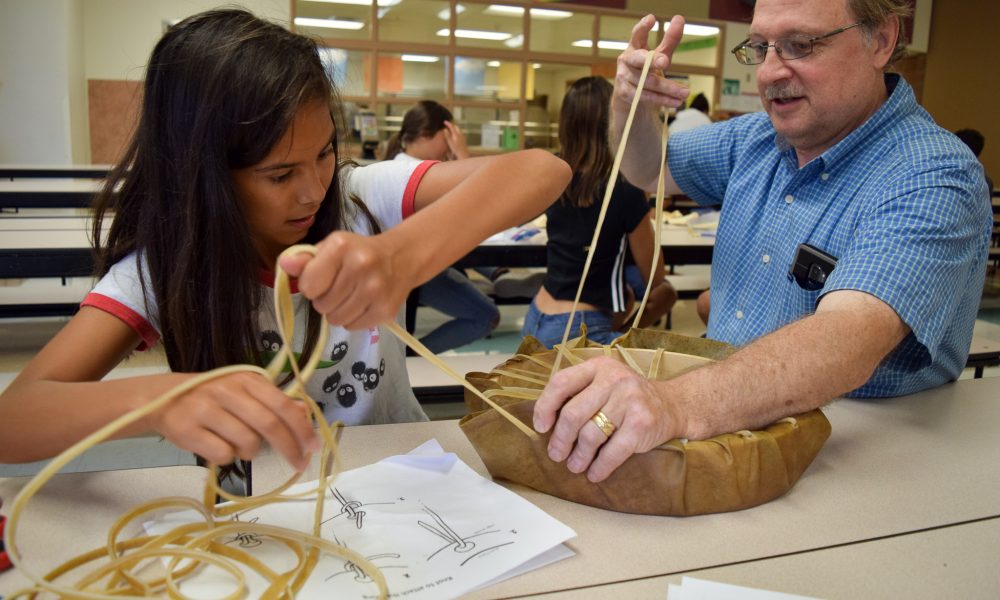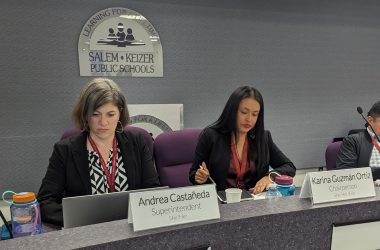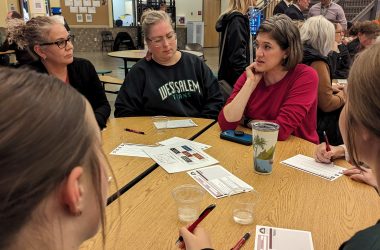
David John Beranek helps Annabelle Davis make a horsehide drum Tuesday. (Saphara Harrell/ Salem Reporter)
In the Harritt Elementary cafeteria on Tuesday, Terry Tucker handed out wet, circular horsehides to a group of kids waiting to make drums.
The room of mostly middle schoolers — all of them of American Indian or Alaska native descent — stretched and affixed hides to make drums, wrapped sinew around drum sticks and sewed moccasins. It’s the last week of Indian Education Summer School, a little-known program that teaches summer classes through a native lense.
Soon-to-be sixth-grader Anthony Montalvo pulled a strip of hide several feet long through his drum and made sure all the twists were out.
“It’s so long, does it need to be this long?” Montalvo asked. He said there should be an app to make the strip the perfect length.

Anthony Montalvo weaves a horsehide drum on Tuesday. (Saphara Harrell/Salem Reporter)
[ KEEP YOUR LOCAL NEWS STRONG – SUBSCRIBE ]
Tucker, a teacher at Keizer Elementary School, was showing the kids how to thread the drums into a pattern. He said the kids need to work quickly before the hides dry out. At another table, Veronica Rhodes, who also teaches at Keizer, was helping students make drum sticks. Rhodes said she’s been teaching at the summer school for six years and loves it.
“This is what kept me in the school district is Indian Education,” she said.
Rhodes plays a game with the students called “Wetu Battles,” where they set up hula hoops in the style of a hut and try to knock them down.
“The kids absolutely love it,” she said.
That game ties into a larger focus of the curriculum called “People of the Light,” which is about the Wampanoag Tribe from Massachusetts. Wetus were a type of shelter Wampanoag people made.
Shelby Maerz, the Indian Education program assistant at Salem-Keizer Public Schools, starts planning the summer school curriculum a year in advance, aiming to teach language arts, cultural arts, and math through a native-based social studies theme.
Maerz said there’s a science aspect to the curriculum as well — Tucker taught the students about vegetables the tribes planted.
There are around 100 kids registered in the program, she said, but only the older kids participated in the drum making on Tuesday.
Maerz said the students working on the crafts have already been in the classroom learning the cultural significance of what they’ll be working on.
“It’s all interwoven together,” she said. “Because it all goes with that thematic unit.”

Students made drums during their last week of summer school. (Saphara Harrell/Salem Reporter)
Have a tip? Contact reporter Saphara Harrell at 503-549-6250, [email protected] or @daisysaphara.









